COVID-19 has complicated the marketing environment, and experts suggest ways to stand out in an ever-changing climate.
The effects of COVID-19 have given a good shake to an already ever-changing marketing landscape, and for pharma marketers it is more difficult than ever to cut through the resounding noise of multiple channels and messages reaching 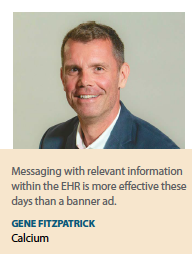 important stakeholders, most of whom are preoccupied with the pandemic. Under these circumstances, digital and virtual means of communication became more important than ever, and marketers are using digital channels, as well as relying on some of the traditional tried-and-true methods. Our experts describe some of their go-to strategies for reaching busy physicians and media-bombarded patients and caregivers and how they plan to move forward in a new era of pharma marketing.
important stakeholders, most of whom are preoccupied with the pandemic. Under these circumstances, digital and virtual means of communication became more important than ever, and marketers are using digital channels, as well as relying on some of the traditional tried-and-true methods. Our experts describe some of their go-to strategies for reaching busy physicians and media-bombarded patients and caregivers and how they plan to move forward in a new era of pharma marketing.
“This year has been a pivotal year for our industry, and particularly, marketers in our industry have had to shift to a new mindset in a matter of months, incidentally which is what we’ve been trying to get them to shift to for 10 years," says Ritesh Patel, chief digital officer, Ogilvy Health. “Healthcare professionals and patients have gone completely digital, which is how marketers need to connect with their customers."
To break through the noise of these uncertain times, brands will need to use digital platforms to connect what they say and do with the evolving needs and behaviors of their customers, and they can do so with aspirational content in unexpected places like TikTok, streaming platforms, and other lifestyle channels, says Matt Brown, co-founder, brand strategy, BrandMettle.
According to Leah Bowers Apraku, associate director, marketing at Supernus Pharmaceuticals, 2020 brought enormous change to the way the industry produces, markets, and sells pharmaceutical products. “Now more than ever, we must look at the marketing ecosystem as a whole and assess whether the media mix is optimal for the ever-changing climate," she says.
The pandemic has set the stage for the industry to charge forward into virtual and digital in a way it never has before. As our experts say, none of these methods or tools are new, but pharma has been reluctant to embrace them — until now.
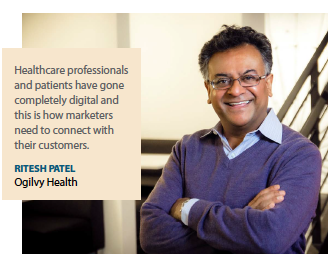 “After COVID hit, we saw how quickly pharma adapted to ‘new things,’ but truthfully, they aren’t new, they’ve been around for years," says Gene Fitzpatrick, executive VP of engagement strategy at Calcium. “But all of a sudden, when this crisis happened, we moved a lot quicker in terms of telehealth. It really forced pharma to get on board with telehealth and develop ways to reach the patient and physician in the telehealth environment or in the health record space."
“After COVID hit, we saw how quickly pharma adapted to ‘new things,’ but truthfully, they aren’t new, they’ve been around for years," says Gene Fitzpatrick, executive VP of engagement strategy at Calcium. “But all of a sudden, when this crisis happened, we moved a lot quicker in terms of telehealth. It really forced pharma to get on board with telehealth and develop ways to reach the patient and physician in the telehealth environment or in the health record space."
Using EHR Messaging to Break Through the Noise
A few of the thought leaders we spoke to believe that electronic health records (EHRs) provide a powerful opportunity for brands to engage HCPs and their patients where it matters most — at point of care.
This new age of digital and telemedicine has become the norm, creating an even greater space for engagement with physicians and patients along the care continuum. Even post-COVID, EHR messaging will present multiple opportunities for pharma to interact with physicians during telemedicine visits at the point of care. Surveys from Ogilvy Health report that 80% of general practitioners surveyed said they would continue to participate in telemedicine for at least up to 60% of their business after the pandemic. So this is a space that will continue to emerge as a way to leverage and reframe digital and nonpersonal outreach initiatives.
According to Mr. Patel, there are usually two schools of thought on using EHRs for messaging. “Some pharma marketers view it as just part of their overall media buy, but it’s actually an engagement play that relies on really understanding your customers, both the doctor and the patient, and engaging with them at that moment in time when they’re looking for information," he says.
Marketers who view EHRs as solely part of a media buy will miss a great opportunity to reach physicians with helpful and relevant messages at the precise moment of care.
“Media buying on EHRs is a shotgun approach and very annoying to physicians," Mr. Patel says. “To maximize that opportunity, marketers need to focus on bringing the right message at the right moment in time. We call that using context and relevancy."
Mr. Fitzpatrick says EHRs are a “great white space" for messaging, but the messages must be sincere and on point. Physicians don’t want to see a banner ad or a sales message about a product at the time they are treating a patient. At that time, they need information that will help them make a better diagnosis or prescription choice, not a sales pitch.
“When in the EHR space and messaging a doctor, we know they’re not interested in a sales pitch, which is almost offensive to them," Mr. Fitzpatrick says. “They are trying to provide care with a point-of-care tool, and this is not the time to try to sell them something. What pharma needs to do is to provide legitimate support for that POC moment on behalf of the brand or on behalf of the company."
He suggests that when the physician is opening up that health record when he or she is with a patient, instead of a promotional banner proclaiming, “buy Brand X," the message should contain helpful information, such as recent updates to NCCN cancer guidelines for the patient, courtesy of Brand X. “Those messages resonate and engage a physician so much more," Mr. Fitzpatrick says.
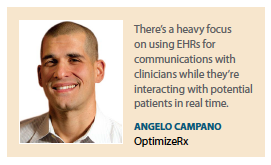 To reach the right physician with the right message at the right time requires using business rules, or triggers that include, but are not limited to, demographics, patient history, geographic region, and physician specialty. Once these business rules are fulfilled within the EHR workflow, a meaningful and relevant message appears for the physician. This allows brands to specifically target HCPs, while simultaneously driving home the idea of personalized care.
To reach the right physician with the right message at the right time requires using business rules, or triggers that include, but are not limited to, demographics, patient history, geographic region, and physician specialty. Once these business rules are fulfilled within the EHR workflow, a meaningful and relevant message appears for the physician. This allows brands to specifically target HCPs, while simultaneously driving home the idea of personalized care.
“This type of messaging requires extreme targeting done with business rules that define if both the doctor and patient meet the criteria, that then triggers a message that displays on a telemedicine screen," Mr. Patel says. “Only when the rule is satisfied does that piece of content get displayed into the EHR."
Determining when the doctor should see a message or when the patient should be engaged with a message are essential elements in EHR messaging, Mr. Patel says.
“We spend a lot of time considering at what moment in time is best for the message," he says. “Is it at diagnosis when the physician is talking to the patient about care options, or is it when they prescribe a brand? For example, we have developed a module that when the doctor is prescribing a medication we can provide tools such as a real-time benefit check that allows for the offer of a coupon or a copay if they don’t have coverage. Or if the medication needs prior authorization we can fill in the form automatically for the office admin and send it directly to Lash or CoverMyMeds or another adjudicator. We can even enroll patients into a patient-support program once they’ve been prescribed the medication."
The timing determines the type of messaging. “For example, if a doctor is just looking up information or logging in, maybe the message is about a new approval or a new indication, so they can click and learn more," Mr. Patel says. “But when physicians are in prescription writing mode, maybe they want to provide the patient with information about how the medicine can be afforded."
Digital health solutions provider OpimizeRx has developed TelaRep, a virtual communication solution that provides a HIPAA-compliant, secure, virtual connection that enables providers to easily contact the appropriate pharma representative right from within their clinial workflow in the EHR. Physicians can communicate directly with their pharma rep or medical science liaison (MSL) and receive important support when determining the best treatment regimen for a patient.
“There’s a heavy focus on EHR communications with clinicians while they’re interacting with potential patients in real time," says Angelo Campano, senior VP and principal of agency channels, OptimizeRx.
Before COVID-19 and social distancing, physicians treating patients with complex diseases could consult with MSLs in their offices to ensure the appropriate treatment plan. Now that COVID-19 severely restricts these face-to-face interactions, there is a critical communication gap that can put patients at risk.
Pharma can use solutions like TeleRep to fill this gap by enabling providers to connect with the MSLs via on-demand video consults from within their existing EHR workflow.
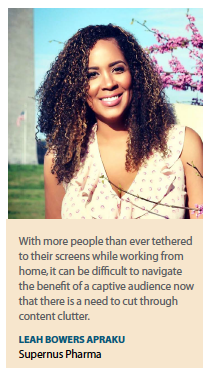 OptimizeRx’s EHR communication solutions help increase prescription lift, Mr. Campano says. For example, for one disease, there were only a few hundred patients that had been diagnosed and treated in a couple of years. Once an EHR messaging campaign was implemented, the number of patients increased by 25 in just a three-month period.
OptimizeRx’s EHR communication solutions help increase prescription lift, Mr. Campano says. For example, for one disease, there were only a few hundred patients that had been diagnosed and treated in a couple of years. Once an EHR messaging campaign was implemented, the number of patients increased by 25 in just a three-month period.
“Our enterprise engagements produce strong results from improved interoperability between our point-of-care and direct-to-patient communications, which all work together to deliver better outcomes," he says.
Mr. Campano says the company is looking at different ways to make the system smarter, including using conversational AI to facilitate these interactions instead of relying on a data scientist to build the business rules to give to a platform to actually execute.
TikTok, Targeted TV, Audio, and More Tips for Breaking Through
the Noise
In November 2019, cold and flu brand Mucinex was the first OTC medicine to engage with the TikTok platform. The brand translated its zombie-themed campaign for new product NightShift into a challenge promotion called #TooSickToBeSick — and it racked up more than 738 million downloads. In February 2020, Mucinex launched its second TikTok dance challenge, which accumulated 565 million views in just the first few days. In December 2020, TikTok user @juliasendojourney went viral after revealing that Mucinex can help you get pregnant. She discovered this while she had COVID-19 and was taking Mucinex to get relief from her symptoms. Her video received more than 8 million views.
This is the value of TikTok.
“TikTok, connected audio and television, and telehealth and EHR are the really big opportunities for pharma right now," Mr. Fitzpatrick says. “TikTok — or any other similar platform — is a great example of what pharma should be leveraging these days. Just one clip is going to reach and connect with so many more patients than anything that traditional pharma has done."
Imagine a multiple sclerosis patient who posts a video of herself dancing and saying, ‘I learned I have MS, but I’m dancing now because I’m going to enjoy everything that I can,’ Mr. Fitzpatrick says. “Just a little clip on a platform like TikTok or Instagram is probably going to reach many more people, especially if it is hash-tagged #MS or #MSsucks, which is a pretty popular hashtag," he says.
“Remember the Ice Bucket Challenge — this is a great example of using social media. Imagine something like this happening now, the reach is quicker and larger today. Pharma companies should be encouraging patients to have their own voices and sit back and be a part of those conversations."
Fresh, lifestyle content running within unique categories and mediums, where consumers are not used to seeing pharma ads, is a great approach for breaking through the noise, Ms. Bowers Apraku says. “Consider innovative social platforms that can be leveraged with influencer and patient ambassador content. The key is to create more ‘real-life’ content with emotional connectivity and to spend more money in the programmatic space on lifestyle platforms," she adds.
Ms. Bowers Apraku also suggests getting back to the basics of delivering positive messages that allow consumers the escapist potential of media during these uncertain times.
“Consumers do not want a reminder of another medical condition during a pandemic," she says. “But they do need to know that pharma cares, is present, and is looking to the future."
With more people than ever tethered to their screens while working from home, it can be difficult to navigate the benefit of a captive audience since there is a need to cut through content clutter, she says. “Pharma advertising must be creative and show up on platforms where it historically has not appeared," Ms. Bowers Apraku says. “Using more digital tools to reach patients and physicians will be key in the new digital-based ecosystem. There are ways to still have a presence in POC and print but in a digital capacity."
For example, she says, geo-target patients with compelling digital ads when they are within range of the doctor’s office, such as when Starbucks or Dunkin’ Donuts ads pop up on a smartphone when you are close to one. Also, consider buying digital ad space instead of print ad space with publications since more people are buying digital subscriptions to magazines.
Two more solutions for breaking through the noise are addressable TV and audio, especially with people working from home and having more access to those media.
Addressable TV advertising is the ability to show different ads to different households while watching the same program. With the help of addressable advertising, advertisers can move beyond large-scale traditional TV ad buys to focus on relevance and impact.
For marketers, addressable TV advertising allows them to reach more specific audiences with greater creative flexibility, deeper insights, and more dependable ROI data. With much more granular TV attribution and measurement, advertisers can understand the true performance of their ad, including engagement, brand lift, and conversions.
“We can now be so targeted with television; we no longer have to do these big, massive national TV buys," Mr. Fitzpatrick says. “I would recommend that pharma takes a serious look at this option. Truly, I think that sometimes there’s just a knowledge gap about addressable TV. It’s just like a regular television, only a more targeted approach."
Streaming audio and radio platforms, such as iHeartRadio or Pandora, are big white space areas that pharma is not taking advantage of.
Because of the increased use of these radio platforms, now is the time for pharma to revisit the effectiveness of jingles, Mr. Fitzpatrick says.
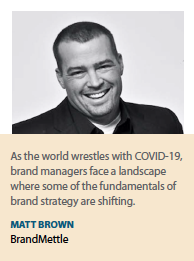 “What’s old is new again," he says. “Pharma is primed for traditional jingles. A good old-fashioned jingle on a radio commercial can be really effective, and it’s certainly a huge white space because pharma often doesn’t think about this space, but for general awareness this could be so impactful. A good jingle sticks in somebody’s head for three days — talk about brand recognition. The ability to leverage sonic branding right now is really tremendous. I’ve been pushing for jingles for the last couple months. And some pharmaceutical companies are entering the space slowly, which is interesting to see."
“What’s old is new again," he says. “Pharma is primed for traditional jingles. A good old-fashioned jingle on a radio commercial can be really effective, and it’s certainly a huge white space because pharma often doesn’t think about this space, but for general awareness this could be so impactful. A good jingle sticks in somebody’s head for three days — talk about brand recognition. The ability to leverage sonic branding right now is really tremendous. I’ve been pushing for jingles for the last couple months. And some pharmaceutical companies are entering the space slowly, which is interesting to see."
As the world wrestles with COVID-19, brand managers face a landscape where some of the fundamentals of brand strategy are shifting, Mr. Brown says. “One of these shifts is that consumers are not simply looking for functional superiority, but rather emotional connectivity," he says. Creating closeness by identifying with personal goals, values, and circumstances of patients and physicians is going to have an increasingly significant role in impacting brand choice.
A second shift, according to Mr. Brown, is that COVID-19 has brought the concept of protecting oneself to the forefront. Brands should consider content that balances strength and empathy. Be protective, without being entirely functional, tell stories that provide moments of optimism and are uplifting.
“Unlike buying a car, we consume healthcare in an effort to protect — not celebrate — self," he says. “And for those with chronic disease, it isn’t just more prominent, it is of critical importance. There may not be a better time to provide a strong, reassuring message."
The new normal of marketing is upon us, and Mr. Patel says not to expect it to ever go back to the way it was. Now that people have sampled how telemedicine, EHRs, and other nontraditional modes can be leveraged, there is no going back.
While some may hope for a more hybrid model of both old and new, Mr. Patel does not think that is the way of the future.
“I would encourage marketers not to go back," he says. “You’ve innovated. You’ve learned the hard way. You’ve engaged in a new way digitally. Don’t go back, because your customer won’t. You’re not going to compete as well because your clients are not going to change. Human behavior has changed and will continue to change. The industry must get used to it and embrace it, learn new ways of engaging with stakeholders in a contextual and relevant way and not go back to doing old things in this new environment."(PV)
~~~~~~~~~~~~~~~~~~~~~~~~~
Going Virtual to Break Through the Noise
As the industry pivots from in-person visits to virtual platforms, a hybrid environment that contains a virtual component is emerging.
 Shaun Urban Inception
Shaun Urban Inception
As many companies scramble to figure out the best ways to use technology in the pandemic culture, some pharma companies engaged with interactive virtual events well before the coronavirus pandemic occurred. Allergan is one of those companies, holding its first virtual meeting in December 2018 as a replacement for one of its two annual in-person sales-training events. It used two virtual-meeting platforms — Pando and Skype — to produce the general sessions and small-group breakouts across a revised meeting agenda of two six-hour days and a two-hour final day. While this was a sales training meeting, companies can use the same structure to hold medical educational programs for physicians.
“Companies have had to pivot from a lot of in-person sales and education and promotion approaches to their healthcare professional audience to virtual platforms," says Shaun Urban, president of Inception. “For the foreseeable future once the pandemic is behind us, we are all aware that we’re not going back to an all in-person environment. It’s going to be a hybrid environment that will contain a virtual component."
Before moving to these virtual components, marketers should assess these four key elements: is virtual relevant for the use case; how important is production value; how often should virtual be used; and is the content immersive and engaging enough for a virtual setting.
Mr. Urban says pharma companies are doing a good job in figuring out which virtual platforms are best suited for their use case, whether marketing or educational, and the audience they want to reach. Using the four elements mentioned above, he elaborates on how to determine the value of using a virtual platform.
First, he says, marketers need to determine how engaging does the virtual technology or platform need to be and how much interactivity does it support? “We know high engagement and interactivity is required from the virtual meeting platform for advisory boards or speaker training meetings and events since they are trying to simulate an in-person experience," he says.
The second component to evaluate is production value. How polished does the actual final virtual product and event need to look and feel and be? How much professionalism does it really need to result in? While some meetings might require high-definition cameras that present the most polished experience in reaching their most important physician or thought leader customers, other meetings may not require such a high production value.
The third element relates to frequency. How often does a company or organization need to replicate the meeting or experience? Often, the answer and frequency are determined by cost.
“For example, clients have pivoted nicely to using web conferences as the preferred virtual solution that supports doing a large volume of these events similar to the hundreds or thousands of speaker dinner programs they would do in a year," Mr. Urban says.
And lastly, content is still king, especially with a virtual component. Content must be immersive and engaging in nature when streaming it through a virtual platform.
“It’s not enough to simply use the same content that would have been used for an in-person meeting," Mr. Urban says. “Instead companies are using multiple forms of media beyond just PowerPoint slides, including videos, content from the web, mechanism of action, and models that are being integrated into various virtual technologies. Not only must the content be both fluid and engaging, but the virtual meeting platform must support multiple modalities to keep the attention and captivate the minds of their physician customers for an hour, 90 minutes, or two hours."



















